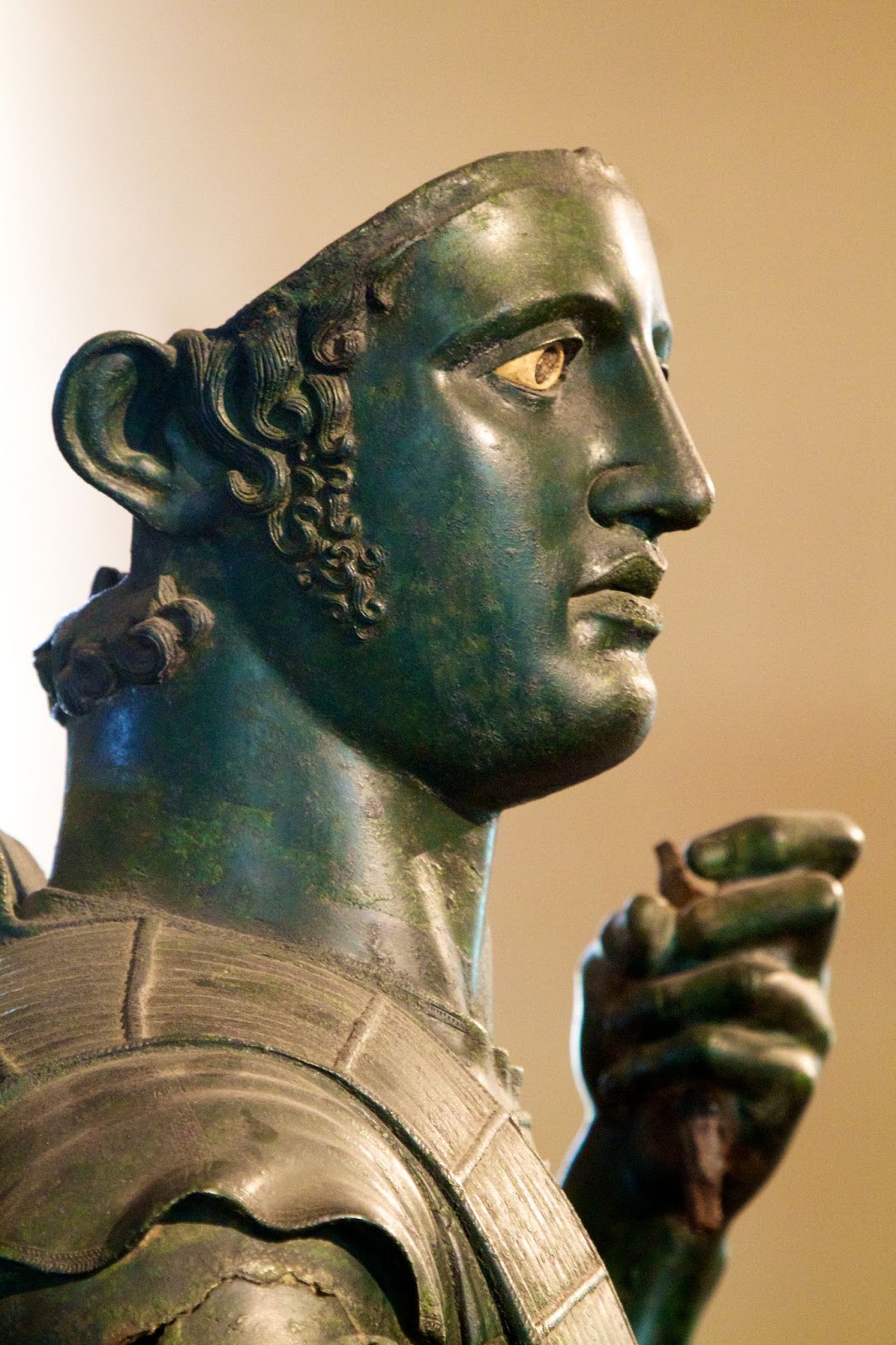Mars of Todi 5th C. BCE
"The so-called Mars of Todi is a near life-sized bronze warrior, dating from the late 5th or early 4th century BC, produced in Etruria for the Umbrian market. It was found at Todi (ancient Tuder), on the slope of Mount Santo.
The bronze warrior was an expensive votive offering made at a religious sanctuary, possibly to Laran, the Etruscan God of war. It had been buried in antiquity, perhaps ritually, and left undisturbed until its discovery in 1835. It is an example of the highest-quality "prestige" works from Etruria found in Umbria during this period, and probably came from a workshop in Orvieto (Etruscan Velzna, Roman Volsinii). Velzna was known for its bronze sculptures, more than 2,000 of which were looted by the Romans in 265 BC.
The dedication is inscribed on the skirt of the breastplate. It is written in Umbrian in Etruscan characters and marks the beginning of the epigraphic tradition in this part of Umbria. The man dedicating it, however, has a name that is Celtic in origin, an indication of Tuder's "cosmopolitian" character in the Archaic period. The inscription reads Ahal Trutitis dunum dede, "Ahal Trutitis gave [this as a] gift"."
-taken from wikipedia
 |
| Mars of Todi 5th C. BCE. Original, which is missing its helmet. |
 |
| Mars of Todi with reconstructed Helmet by Thorvaldsen, circa 1900. |
 |
| The inscription. |
 |
| The inscription. |
https://en.wikipedia.org/wiki/Mars_of_Todi
https://www.univie.ac.at/lexlep/wiki/trutitis
https://www.flickr.com/photos/pelegrino/7078824887
https://commons.wikimedia.org/wiki/File:0_Mars_de_Todi_-_Museo_Gregoriano_Etruscano_(4).jpg
https://en.wikipedia.org/wiki/File:0_Mars_de_Todi_-_Museo_Gregoriano_Etruscano_(5).jpg
https://www.akg-images.co.uk/archive/-2UMDHUWZXCPN.html
https://www.akg-images.co.uk/archive/-2UMDHUWZXICJ.html
https://commons.wikimedia.org/wiki/File:Mars_of_Todi_with_helmet.jpg
https://www.pinterest.com/pin/422986589985521805/








Comments
Post a Comment